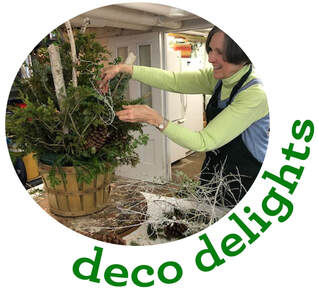
Horticultural hints from Betty Sanders Our chilly, wet spring is finally behind us. It’s time to put out tender annuals. Whether you are planting geraniums and impatiens or verbena and angelonia, annuals can now safely be put in the ground or in your container gardens. In the vegetable garden, it’s time to plant tomatoes, peppers, eggplant, melon, summer and winter squash. Use cutworm collars on tomatoes, eggplant and peppers. Cutworms chew off your plants just above ground level but can be deterred by a simple collar of stiff cardboard or a bottomless can pushed one inch or more into the soil around the plant’s stem. Cage your tomatoes. Don’t leave your tomatoes lying on the ground, they need to be grown on a trellis or in cages. The fruit is more likely to rot if sitting on wet soil. Mulching around the base of tomato plants will keep the soil evenly moist and reduce the incidence of blossom end rot. And feel free to cut off the topmost branches if your tomatoes plants are getting too tall for their cage –or for you to harvest. As the days get longer and hotter, make certain your garden doesn’t dry out. Plants under stress will not provide what you are growing them for. Pine needles, shredded bark, and leaf mold are all attractive beneficial mulches for flowers and vegetables that reduce weeds and preserve water — but no more than two inches of mulch! Too much is as bad as too little. When your rhododendrons (and remember azaleas are rhododendrons) are finished blooming, remove the dead flower heads. The plants will look better and not waste energy producing seeds you don’t want. When your bearded iris finish blooming, it’s time to divide them. Dig up the entire clump of tubers and divide it into two-armed ‘fans’. These will provide a good display next year. Because you have reduced the roots, also cut the foliage back by half. And discard any tubers that show signs of iris borer infestation. |
Hyacinths yield dividends. In my garden, grape hyacinths are permitted to go to seed and self-sow, providing many new plants in the future. Next year you will get only greens (which look like grass) but, in a couple of years, you will have greatly increased the number of hyacinth flowers. Daffodils, on the other hand, are best deadheaded after the flower has passed to put strength back in the strength back in the bulb. This way the bulb will produce bulbils that in a couple of years will look like small bulbs and begin producing more daffodil flowers. Keep up your weeding. Weeds are your plants enemies, stealing water, nutrients and sunlight. Straw or weighted newspapers placed between rows effectively block most weeds in the vegetable garden; reducing your workload and giving you more time to enjoy the garden. Now is the time to prune spring blooming shrubs before they set next year’s flowers. As you prune, use this clean-up process to also set the future shape of the plant. Left on their own, most shrubs want to get larger than the space you’ve allotted them. Your spring pruning will ensure the plant stays in the site as you envisioned when first planted. Side dress the beds of perennials such as rhubarb and asparagus beds after the harvest is finished with composted manure or other organic fertilizers. These plants are heavy feeders and need to replenish their reserves for next year. Add native plants to your landscape. Native plants require less maintenance than lawns, mulch tree, shrub and perennials bed. Once established, they require less water, no fertilizers and no pesticides. An additional benefit is they attract native birds, butterflies and admirers. Give your houseplants a summer of rejuvenation. Now that nighttime temperatures don’t go lower than 55 degrees, set houseplants out on a screened porch where they’ll get more sun and fresh air. Their time in a new environment will also promote growth and blooming. You can read more of Betty's horticultural advise on her website, www.BettyOnGardening.com. She is a lifetime Master Gardener. |
Videos from fellow Member, Matt Martin
|
|
|
|
|
|

Hamilton-Wenham Garden Club, PO Box 2035, South Hamilton MA 01982 | Contact us | follow us at
